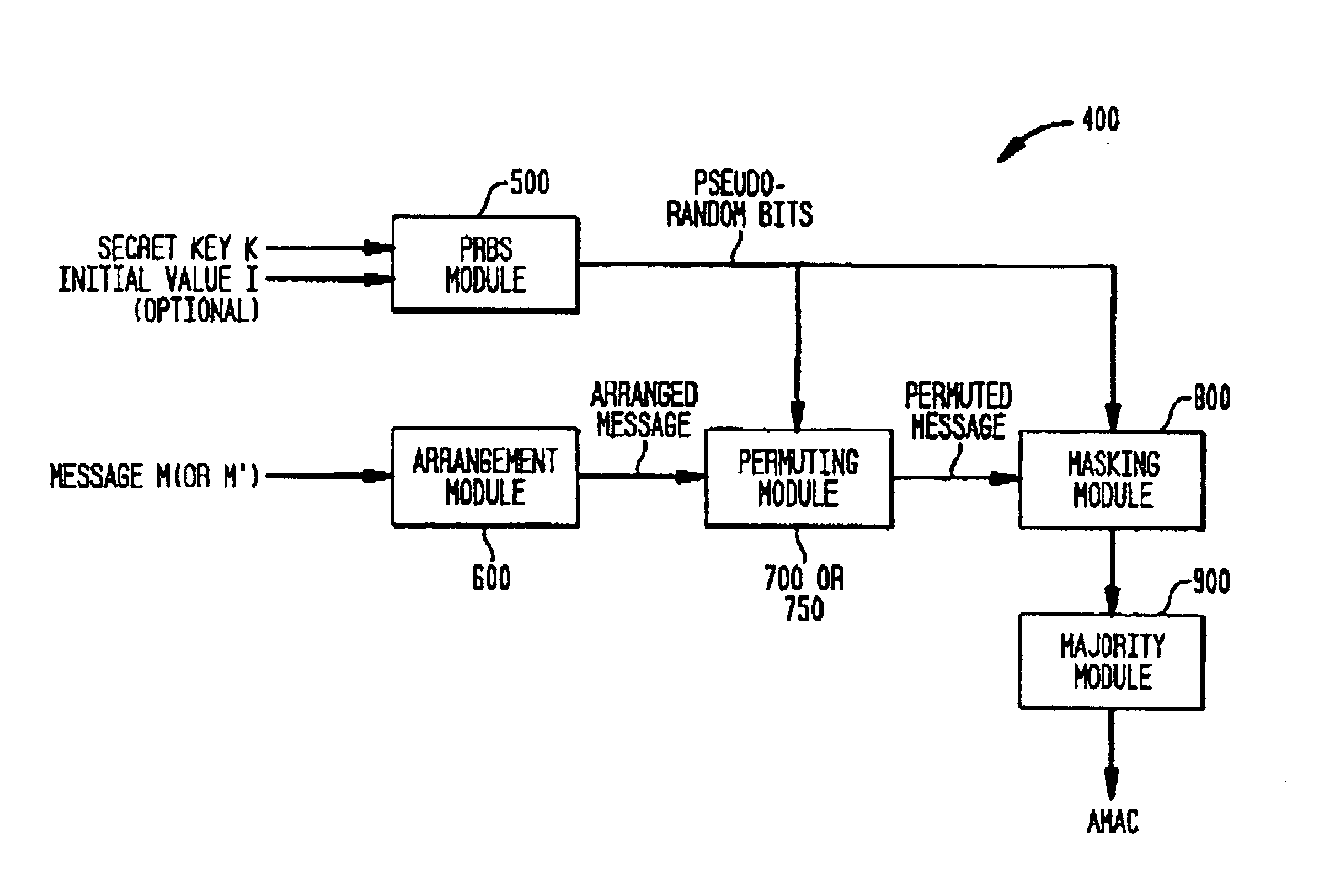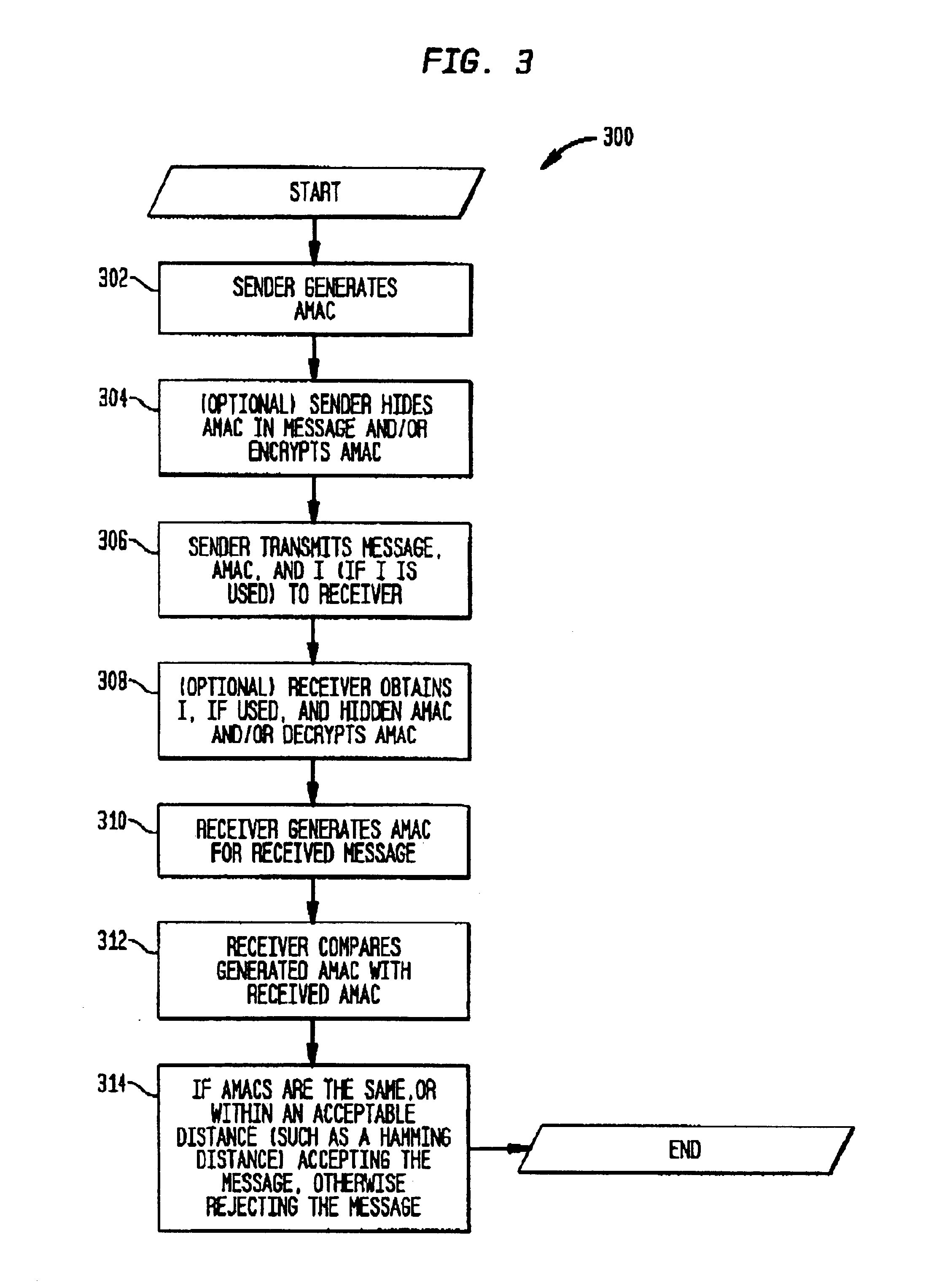Method and device for generating approximate message authentication codes
a technology of authentication codes and messages, applied in the field of authentication of the source and integrity of can solve the problems of unsatisfactory, unsatisfactory, and unsatisfactory, and achieve the effects of ensuring the integrity of the transmitted or stored information, and facilitating the transmission of the messag
- Summary
- Abstract
- Description
- Claims
- Application Information
AI Technical Summary
Benefits of technology
Problems solved by technology
Method used
Image
Examples
Embodiment Construction
Overview of the Invention
FIG. 3 is a flowchart 300 of an overview of the method according to the present invention. A sender generates an Approximate Message Authentication Code (AMAC) for a message M where approximate integrity is acceptable (step 302). Some examples of messages where approximate integrity may be acceptable include a still or moving image or voice. A person skilled in the art readily recognizes that many types of messages may fall within this category. The AMAC may be generated using a shared (or secret) key shared with the intended recipient and, optionally, an initial value I. Optionally, the sender may hide the AMAC in the message M, using for example, steganographic techniques; the AMAC may be encrypted; or the AMAC and message may be combined (for example, possibilities include concatenation or steganographic techniques) and the combination encrypted (step 304). These steps may be performed by a cryptography device 100 (as seen in FIG. 1), special purpose proc...
PUM
 Login to View More
Login to View More Abstract
Description
Claims
Application Information
 Login to View More
Login to View More - R&D
- Intellectual Property
- Life Sciences
- Materials
- Tech Scout
- Unparalleled Data Quality
- Higher Quality Content
- 60% Fewer Hallucinations
Browse by: Latest US Patents, China's latest patents, Technical Efficacy Thesaurus, Application Domain, Technology Topic, Popular Technical Reports.
© 2025 PatSnap. All rights reserved.Legal|Privacy policy|Modern Slavery Act Transparency Statement|Sitemap|About US| Contact US: help@patsnap.com



